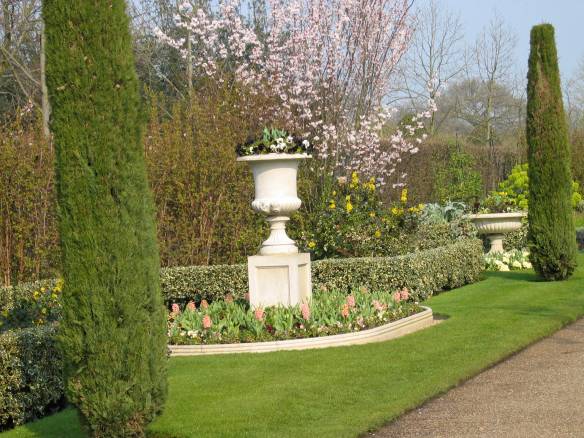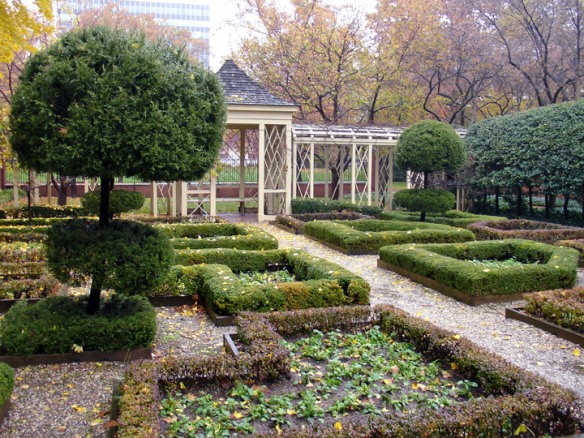GARDEN PHOTOGRAPHY is not easy. The light has to be right, and unless a shot is perfectly composed, it often looks like a jumble.
So I was amazed at how each and every one of my photos of the Avenue Gardens in London’s Regent’s Park, taken this week last year, came out looking like a picture postcard. That’s because the design, completed in 1864 — High Victorian bedding schemes with fountains and ornaments — is so rigidly formal and symmetrical.
I had arrived in London the day before, and gone out walking with my cousin Elissa (Regent’s Park is right across the road from her house). It was misty and raining, and — jet lag brain — I had forgotten my camera.
Pity, because that might have made these rather trite shots more interesting. When I returned the next day, the sun was shining.
All my pictures need is a scalloped edge and a postage stamp.
You can see from the hyacinths and tulips — and that giant chartreuse euphorbia, below — how much farther along their season is. When we in the New York area are just getting green shoots, England’s bulbs are in full flower.























